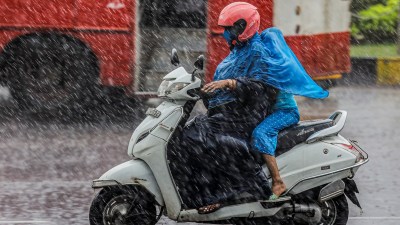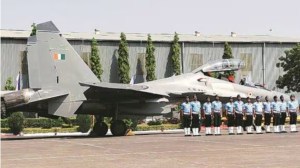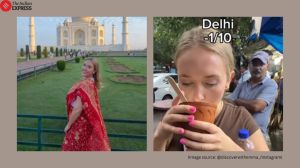‘We have a lot of consumer items, we want access to Indian market’
The ‘‘unprovoked’’ killing of 16 BSF personnel by Bangladesh Rifles in Boriabari post on the Indo-Bangla border in Megha...

The ‘‘unprovoked’’ killing of 16 BSF personnel by Bangladesh Rifles in Boriabari post on the Indo-Bangla border in Meghalaya two years ago, the rancour over Dhaka’s insistence that it be kept informed at every stage of the river interlinking project, and its emphatic denial, of late, on the presence of militant camps in its territory, have cast a shadow on India-Bangladesh relations.
But the new Bangladesh High Commissioner, Hemayat Uddin , who has returned to India after almost two decades, says there is more to Indo-Bangla relations than just these. In an exclusive interview to Pranab Dhal Samanta — his first to the Indian press — Hemayat Uddin turns the spotlight on economics, stating that trade, investment and mutual economic cooperation hold the key in taking the relationship forward. After all, Bangladesh is India’s largest trading partner in the region and SAFTA has gained impetus at Islamabad.
• It has been nearly a month since you took charge. You must have had the opportunity to survey the bilateral relations. What vision do you bring with you? What would be your areas of focus?
Look, I work on the premise that we have excellent relations between Bangladesh and India and this relationship cannot be static. I feel good relations can be made better. And best relations can be made even better. We will try and see how we can expand our economic interaction and encourage Indian businessmen to go to Bangladesh and take advantage of the investment facilities.
We will try to also promote our export items, so that their access in the Indian market is made easier. And hopefully the agreements we have been able to conclude under SAFTA will also facilitate this. Because once we narrow the trade gap (balance of trade is now heavily in favour of India) and once our goods find greater access, it will not only help growth of a healthy trade cooperation but will also expand the overall trade basket of economic cooperation.
On the whole, I am very optimistic of enhancing our relationship and the main thrust has to be through economics and trade.
• New Delhi has been talking of a free trade agreement with Bangladesh. This has also come up at the Indo-Bangla joint economic commission meeting. What do you think are the prospects?
The idea of a free trade has been there and we have started talking. Now, after the SAFTA initiative at Islamabad, we will see how we can proceed from there. In fact, the joint economic commission was to meet again in January, but it had to be postponed due to the SAARC summit.
• There have been a few contentious issues that have emerged between both countries lately and one notices some tension on this count. Do you think an element of doubt has crept into bilateral relations?
When you talk of bilateral issues, each side can have their viewpoint. And mostly these are talked from the point of view of their interests. There can be differences of opinion and I wouldn’t see this in the negative. The difference is in looking from the point of view of each other’s interests.
• India has been raising concern over the presence of militant camps in Bangladesh. There are fears that some of the insurgent outfits in northeastern parts of India actually operate from Bangladesh. Your comments?
I don’t want to go into this simply because we have stated our position. But for the record, Bangladesh has never allowed its territory to be a place for any foreign insurgency group to operate from. Our leaders have made it clear that the assertion that Bangladesh territory is being used by any foreign insurgents is just not true.
• Doubts have been raised by Bangladesh on India’s river interlinking project. What exactly are the concerns?
Being a lower riparian country, we are interested in having our fair share of water needed for sustenance and livelihood. We are interested because interlinking of rivers will have an impact on us. And India’s position is that it is still in the conceptual stage.
• Do you think issues like this as well as the boundary question may become impediments in taking bilateral relations ahead?
Boundary is an issue, yes and we will have to address it. A small portion, about 6.5 km, is still left undemarcated. Maritime boundary has not yet been fully delineated.
• Do you see this as an impediment?
At the moment we are talking about resolving land boundary issues. Once we have been able to do that, it will be a step forward.
• Coming back to trade and strengthening economic cooperation, you said narrowing the existing trade gap was crucial. How do you propose to achieve this?
The obvious way would be to open the access of our goods to the Indian market. Non-tariff and para-tariff barriers must be eased. And this is true for any item. It could be consumer goods like ceramic or leather. We have a lot of such items and we want to facilitate their access into the Indian market.
• Stress has been laid on improving road and rail connectivity between both countries. Are there any more such proposals and will one see more of Indian goods transit Bangladesh in future?
We have no new proposal on bus services. Maybe something will come up at the joint economic commission meeting. I don’t think there is much problem for Indian goods getting into Bangladesh. Infrastructure, like roads etc, have to, however, be improved first.
• There has been some talk of energy cooperation between the two countries as well as Myanmar.
I don’t know about that.
• And what kind of role you expect India to play, both regionally and bilaterally?
India is definitely a bigger country and a larger economy. We look upon India, and I am sure that India looks upon us, as partners.





- 01
- 02
- 03
- 04
- 05

























